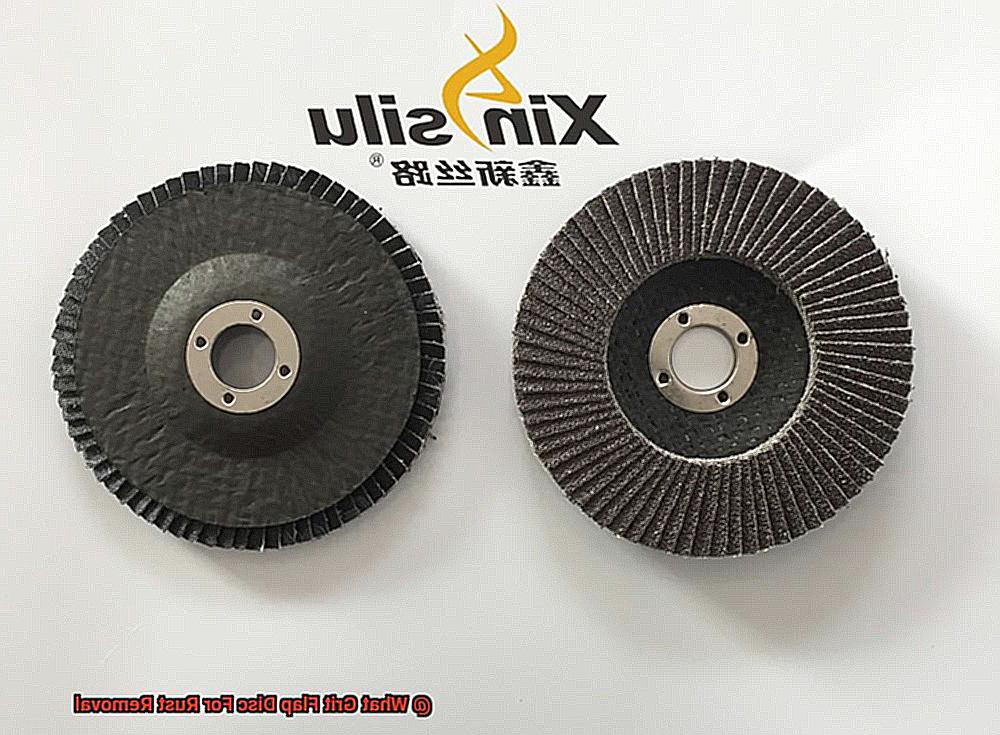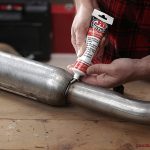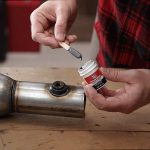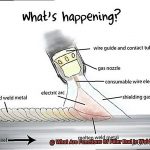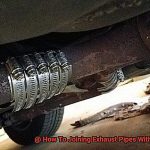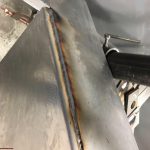Rust is a formidable foe that can wreak havoc on metal surfaces. As a homeowner or DIY enthusiast, you’ve likely encountered this pesky problem and have tried various methods to remove it. While there are plenty of options available, flap discs are an excellent choice for rust removal due to their efficiency and versatility. However, selecting the right grit flap disc can be overwhelming.
If you’ve ever found yourself staring at the array of flap discs in a hardware store, wondering which one to choose, fear not. In this post, we’ll guide you through the different grit levels of flap discs and help you select the best one for rust removal. From understanding the nuances between coarse and fine grit to choosing the ideal flap disc material, we’ll provide all the information you need to tackle rust removal with confidence.
Whether you’re restoring a classic car, revitalizing a metal fence, or embarking on a DIY welding project, knowing which grit flap disc to use is crucial. So let’s dive into the world of flap discs and discover how to select the perfect grit level for rust removal.
What is a Flap Disc?
Contents
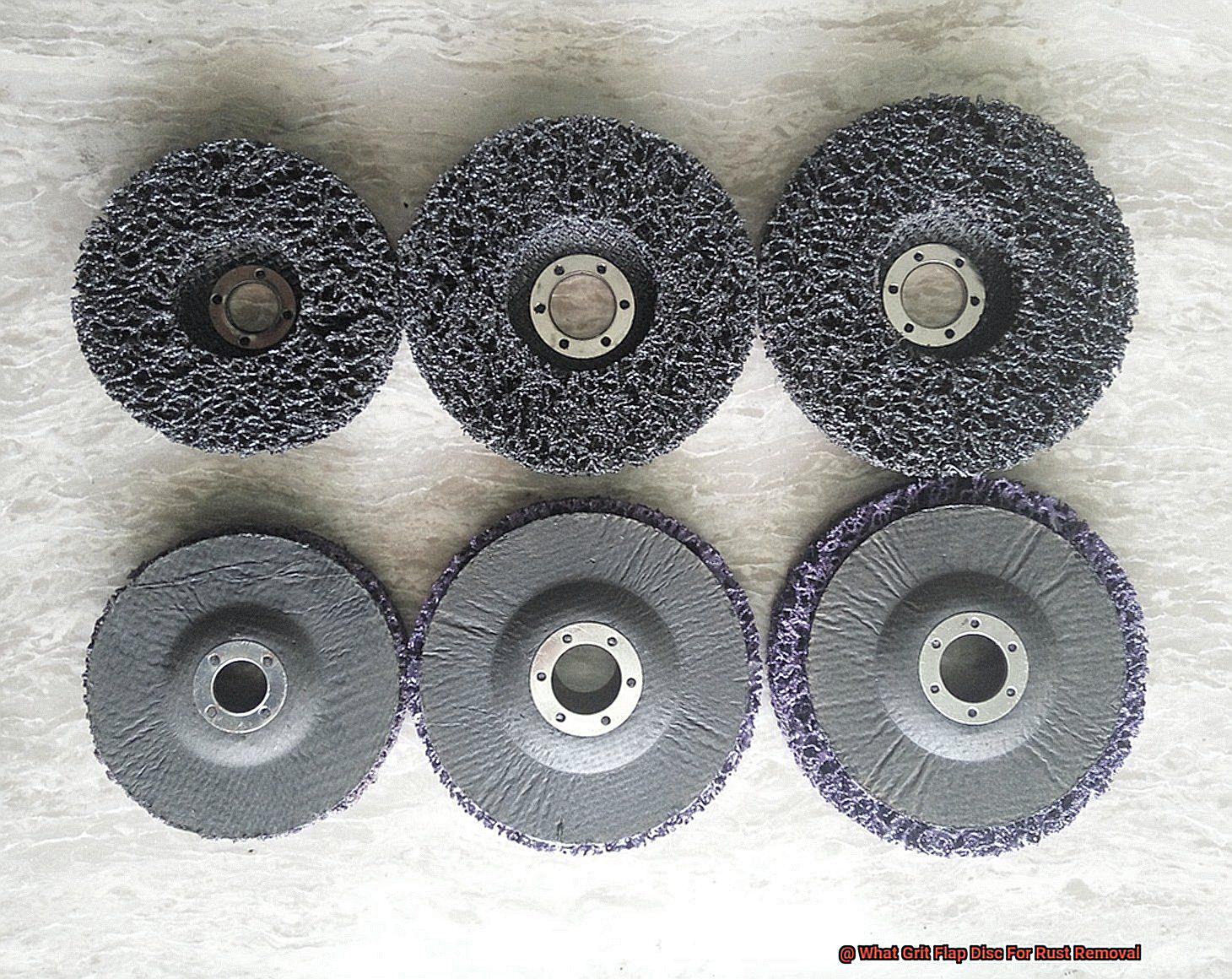
It’s an abrasive tool that consists of overlapping flaps made from abrasive cloth or paper, bonded to a central hub. This unique design allows for even wear of the abrasive material, resulting in a longer lifespan as compared to other abrasive tools.
The type of abrasive material used in flap discs varies depending on the intended use. For general-purpose grinding and sanding, aluminum oxide is ideal. For heavy-duty metalworking, zirconia alumina is the way to go. And for high-pressure grinding, ceramic grain is the most durable and aggressive material used in flap discs.
But what sets flap discs apart from other abrasive tools? First, their flexibility allows them to conform to the shape of the workpiece, resulting in a smoother finish. Second, they produce less noise and vibration than other abrasive tools, making them more comfortable to use.
When it comes to rust removal, choosing the right grit size is key for achieving optimal results. Coarse grits like 40 or 60 can quickly remove rust and surface contaminants but may leave scratches or marks on the metal surface. Follow up with a finer grit like 80 or 120 to smooth out the surface and reduce visible scratches. Finally, use a fine grit like 180 or 240 for a final polish to achieve a smooth and shiny surface.
It’s important to take note of the type of metal being worked on when selecting the appropriate flap disc grit. Softer metals like aluminum or copper require a finer grit to avoid damaging the surface while harder metals like steel or iron can handle coarser grits for more efficient rust removal.
What is Grit?
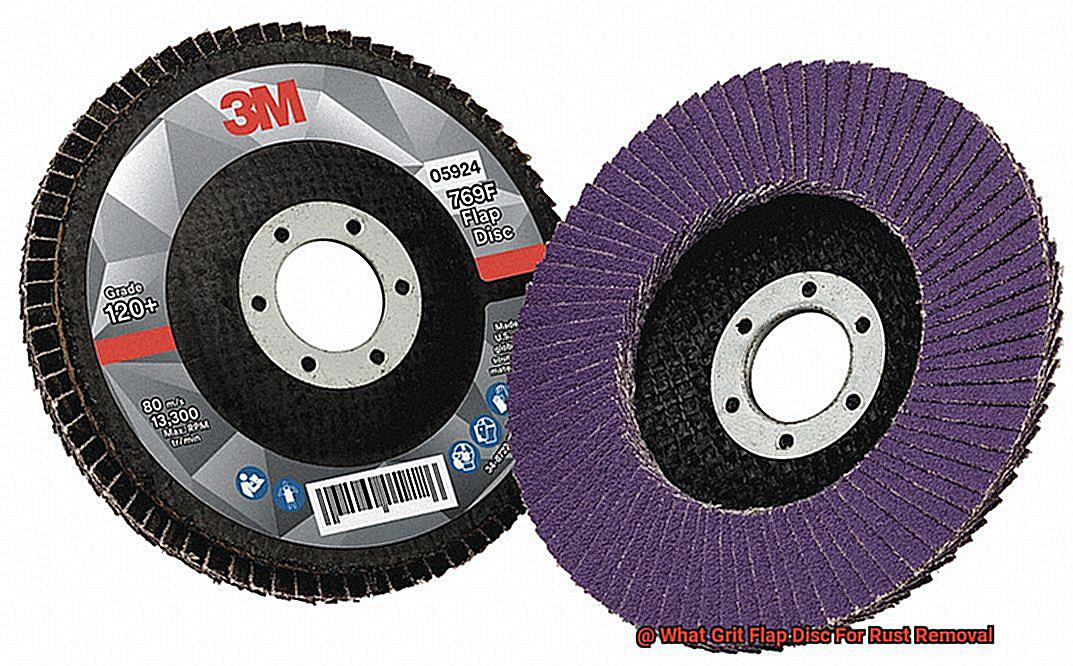
Well, grit isn’t just a characteristic of someone with determination and perseverance. In the world of flap discs for rust removal, grit refers to the size of the abrasive particles embedded in the flap disc.
It’s like sandpaper – the higher the grit number, the finer and smaller the abrasive particles will be on the flap disc. Conversely, the lower the grit number, the coarser and larger the particles will be. For rust removal, using a flap disc with a coarse grit such as 40 or 60 grit is recommended. This ensures that the abrasive particles are large enough to remove rust quickly and effectively from any surface.
Now, here’s where things get interesting. Using too fine of a grit can result in an inefficient and less effective rust removal process. It’s like trying to clean up a sticky mess with a feather duster – it’s not going to work as well as using a scrub brush. Similarly, using too coarse of a grit can leave unwanted scratches or damage on your surfaces.
Therefore, it’s crucial to select an appropriate grit based on the severity of rust and type of material being worked on. Just like how you wouldn’t use a toothpick to clean out your car engine, you wouldn’t use too fine of a grit for heavy-duty rust removal.
Coarse Grit for Rust Removal
As a seasoned expert in coarse grit flap discs for rust removal, I am here to help you choose the right grit for the job.
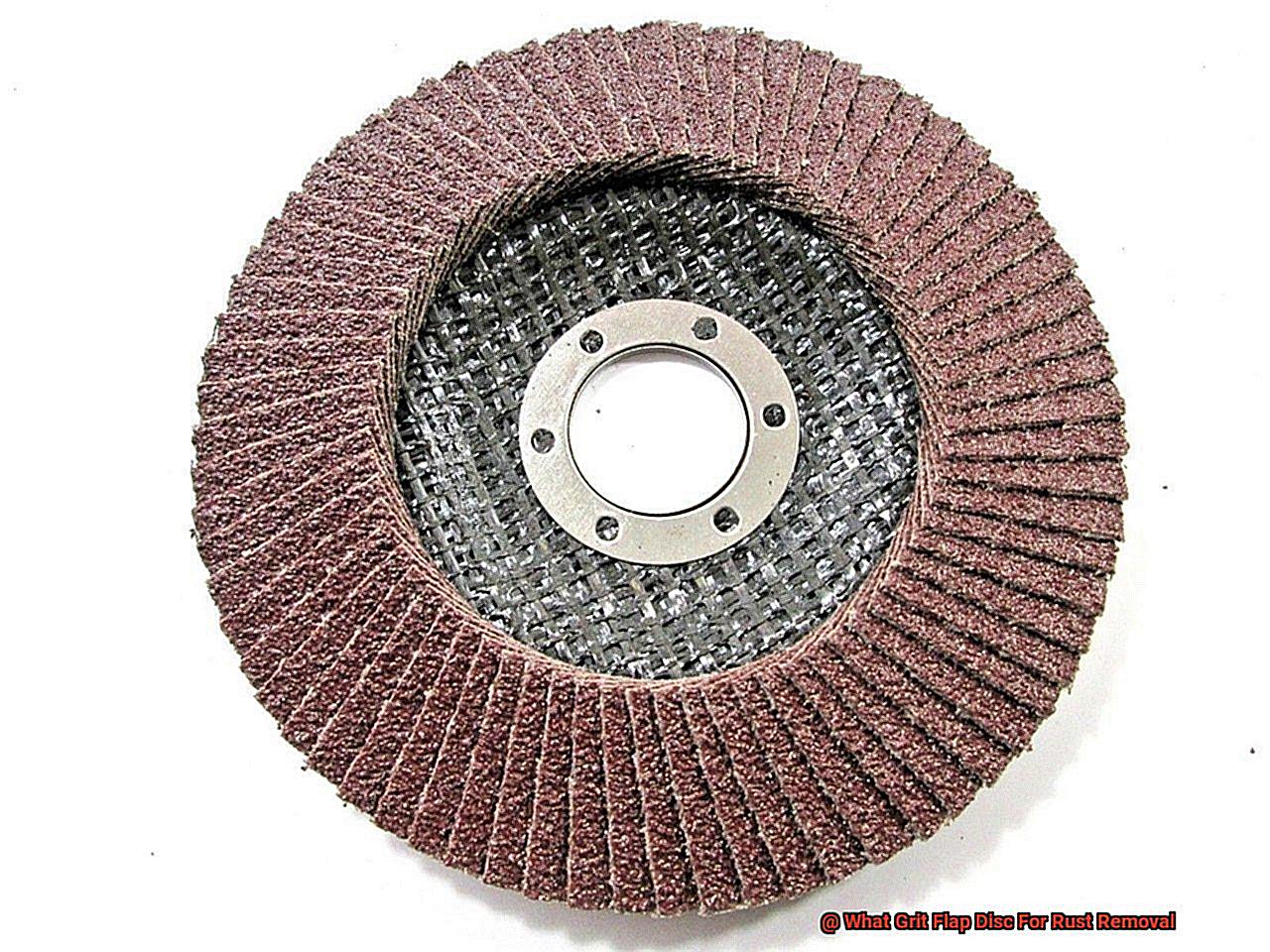
First and foremost, it is crucial to assess the severity of the rust buildup. Is it merely a light surface rust or a more severe accumulation that has been left unattended for an extended period? For more severe rust, a coarser grit such as 36 or 40 may be necessary to effectively remove it. However, for lighter rust buildup, a 60 or 80 grit will suffice.
Additionally, it is important to take into account the type of metal being worked on. Some metals are more sensitive to aggressive abrasives and require a finer grit to avoid surface damage. In such cases, starting with a finer grit flap disc and gradually moving up to a coarser grit if necessary is recommended. Remember, precision is key.
Using a coarse grit flap disc not only removes rust but also smooths out any rough spots or imperfections left behind by the rust. This is particularly helpful when preparing surfaces for further treatment or coating.
Medium Grit for Surface Refinement
In the previous section, we talked about using coarse grit flap discs to effectively remove rust from metal surfaces. But what comes next? That’s where medium grit flap discs come in.
Medium grit flap discs are like the cherry on top of your rust removal project. They provide the finishing touch, giving your metal surface a smooth and polished appearance. With a grit size ranging from 60 to 120, these discs are perfect for refining the surface and removing any remaining imperfections.
Not only do medium grit flap discs eliminate leftover rust, but they also get rid of pesky paint, dirt, or debris that may have settled on the surface over time. This creates a clean base for further treatment and ensures a professional finish.
But how do you use them? It’s important to remember that medium grit flap discs should be used at a moderate speed and with light pressure. This will prevent any damage to the surface and ensure a smooth finish. Plus, don’t forget your protective gear.
Gloves, safety glasses, and a dust mask are crucial in protecting against flying debris.
Fine Grit for Polishing
You’ve successfully removed the rust from your surface – a major accomplishment indeed. But now, it’s time to elevate your project to the next level with a smooth and polished finish. To achieve this, you need to select the appropriate fine grit flap disc for polishing. This choice is critical in achieving that perfect shine.
Think of fine grit flap discs as the final touches on a masterpiece painting. They refine the surface and eliminate any remaining imperfections, making it look polished and professional. However, just as using the wrong color on a painting can ruin the whole piece, using too coarse of a grit can damage the metal and make it harder to achieve that sought-after polished finish.
When selecting a fine grit flap disc for polishing metal surfaces after rust removal, it’s essential to consider both the type of metal being worked on and the desired finish. The grit should be neither too rough nor too smooth. Soft metals like aluminum may require a finer grit than harder metals like stainless steel.
Using a flap disc with a flexible backing during polishing also ensures better contact with the surface and a smoother finish. It’s also worth considering using a polishing compound or grease to enhance the polishing process and give you an even better final result.
Metal Type Considerations
Selecting the right grit flap disc is key when it comes to rust removal from metal surfaces. It’s like choosing the perfect brush for painting a masterpiece – you wouldn’t want to use the wrong one and ruin your work. That’s why it’s crucial to consider the metal type, its thickness, and any coatings or paint present before selecting a grit flap disc.
Different metals have their unique hardness and sensitivity levels, which can impact the safety and effectiveness of using a flap disc. For instance, softer metals such as aluminum and copper require lower grit flap discs to avoid surface damage. A 40-60 grit flap disc is ideal for removing rust on these types of metals. On the other hand, harder metals like steel and iron can withstand higher grit flap discs due to their durability. An 80-120 grit flap disc is recommended for rust removal on these metals.
Metal thickness also plays a role in determining the appropriate grit flap disc. Thicker metals may require an aggressive grit flap disc to remove rust effectively, while thinner metals may only need a finer grit flap disc. It’s essential to take into account the thickness of the metal to avoid damaging the surface.
Lastly, if there are coatings or paint on the metal surface, it’s essential to use a lower grit flap disc to remove rust without damaging the coating or paint. By considering all these factors when selecting a grit flap disc for rust removal, you’ll achieve a smooth and professional result that will make your metal shine like a masterpiece painting.
NlCniNoPLN8″ >
Conclusion
In conclusion, choosing the right grit flap disc for rust removal is key to achieving optimal outcomes. Flap discs are an excellent option due to their versatility and efficiency. By understanding the differences between coarse and fine grit and selecting the appropriate flap disc material, you can confidently tackle rust removal.
When selecting a flap disc, keep in mind the severity of rust buildup, metal type, and any coatings or paint present. Coarse grits like 40 or 60 can quickly eliminate rust and surface contaminants but may leave scratches on the metal surface. Follow up with a finer grit like 80 or 120 to even out the surface and reduce visible scratches. Lastly, use a fine grit like 180 or 240 for a final polish to achieve a smooth and shiny surface.
It’s important to note that softer metals such as aluminum or copper require a finer grit to avoid damaging the surface while harder metals like steel or iron can handle coarser grits for more efficient rust removal.
By comprehending grit size, selecting suitable flap disc materials, and taking into account metal type considerations, you’ll be able to effortlessly remove rust from metal surfaces while ensuring a polished finish. So go ahead.
